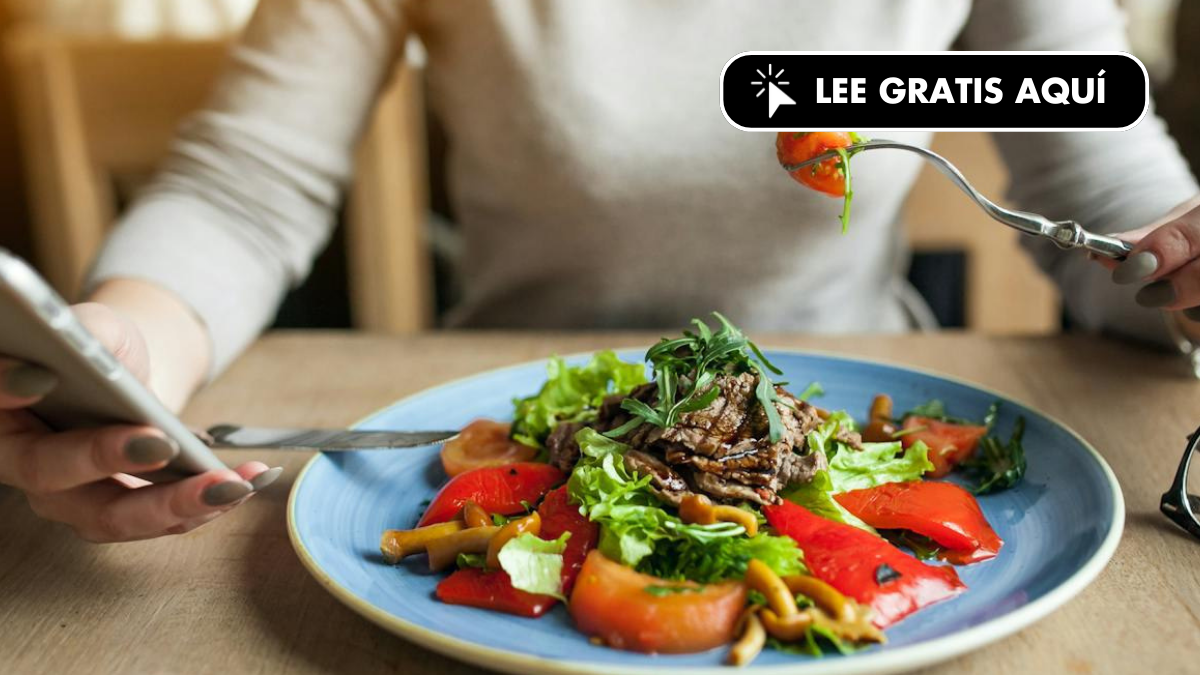If we enjoy what we eat, we will feel full faster.

We live in a hurry. Lots of things to do, little time It seems we have no choice but to multitask.. In this fast-paced, multi-tasking world, we often find ourselves in the habit of eating on the go. without truly realizing the nuances and textures that our products offer.. To make matters worse, screens have become our inseparable companions during meals, diverting our attention.
The question is, does this rush to feed us have any impact on our health? Definitely yes.
Five senses on a plate
In 1927, Pavlov introduced the concept “cephalic response” to describe how our metabolism prepares the body for food intake.. The cephalic response involves the initial phase of the food consumption process, which involves the response of neurons to stimuli such as the smell, taste, texture and appearance of food before it is consumed. Our brains and senses are stimulated even before we open our mouths, preparing our bodies for food.
At this early stage, simply looking at food is enough to trigger the brain to send signals that activate the release of the hormone ghrelin. By nickname “hunger hormone”ghrelin marks the onset of food intake and responds by increasing appetite, stimulating the production of saliva and stomach acid. Essentially, the mind prepares the body to eat food.
And what happens later, when we already put food in our mouth? A recent study in the journal Nature focused on two brain substances directly related to satiety, GCG, which is released during bowel movements, and prolactin-releasing hormone (PRLH).. When food was introduced directly into the stomachs of mice, PRLH cells responded to signals from the gastrointestinal tract. But by eating naturally and enjoying food, these signals have completely changed.. As a deeper analysis showed, stimuli associated with food in the mouth caused the PRLH to slow down the rate of food intake.
More evidence that the simple act of slowly observing, smelling and tasting food plays an important role in our relationship with food.
Eat slowly to eat less
When we put food in our mouth, a series of events are triggered that make up the gastric phase of digestion. Chewing not only stimulates salivation, but also improves the sense of taste and the way we perceive and enjoy food. Slow chewing improves orosensory stimulation. And this can have a positive effect on the digestion process.
Investigation published in the magazine Eating behavior explored How does slow eating affect overweight or obese women? In 5 weeks, sixty-five participants joined slow food (eat slowly) through individual lessons or weekly small group meetings. Slow eaters experienced a decrease in the amount of food they ate during the test.
That’s not the point. Another recent study published in the journal Appetite, investigated how slow eating may affect attention and memory. Forty volunteers came to the laboratory to eat 400 ml of tomato soup at a fast (120 ml/min) or slow (30 ml/min) speed. through a tube connected to a peristaltic pump. The results showed that those who ate slowly felt more full and were better able to remember what they ate later.
But why does eating slowly benefit us so much? This may be due to the action of leptin. It is a hormone that plays a crucial role in regulating body weight and therefore appetite. When we eat heavily and quickly, in a short period of time, we do not give our body the time it needs to process food and release satiety hormones. As a result, an increase in total calorie intake is normal.
Therefore, it seems undeniable that eating at a slow and deliberate pace, using all five senses, can provide significant benefits to our health.
Camila Jimenez, Research Associate, University of Vigo
This article was originally published on The Conversation. Read the original.

